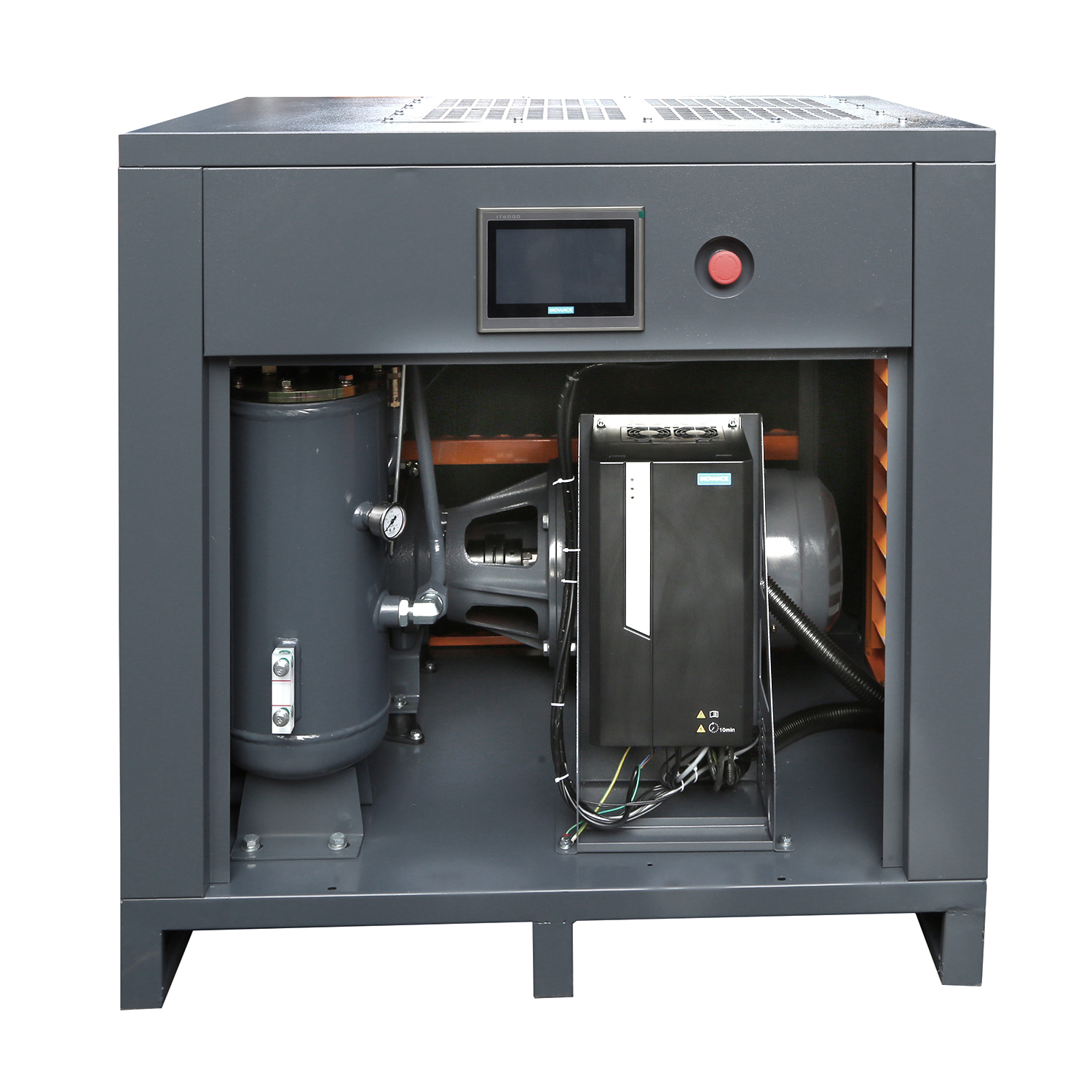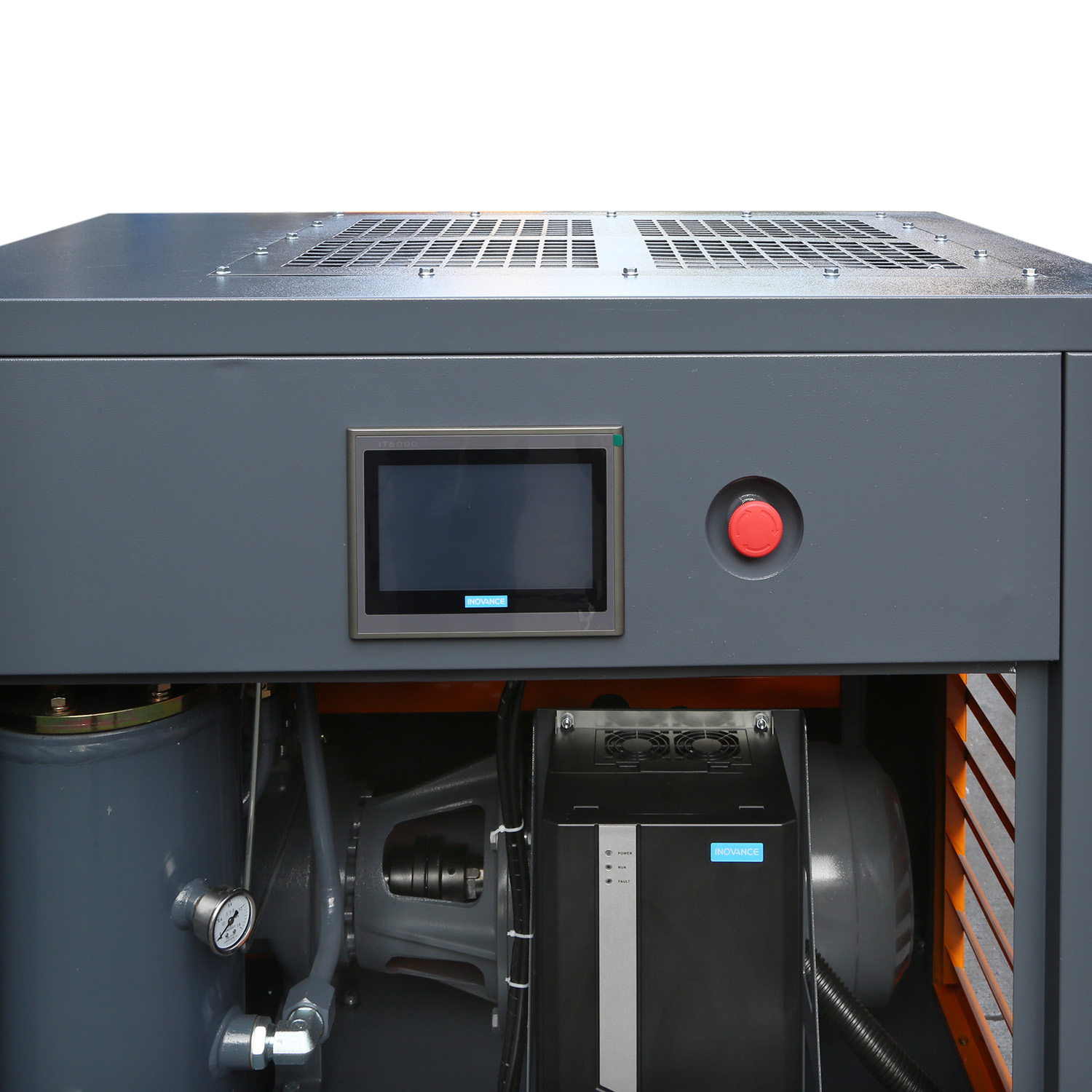First, centrifugal air compressor waste heat recovery and utilization technology background in the global energy demand continues to grow and the actual supply of relatively declining severe situation, energy saving and emission reduction is imperative. Factories have also been looking for potential energy-saving space, and Compressed air systems hold the potential for huge energy savings. Centrifugal Compressed air is one of the most widely used power sources in the industry. Centrifugal Air compressor are speed compressors because of their compact structure, light weight, wide range of exhaust capacity, and small number of fragile parts, the utility model has the advantages of reliable operation, long service life, non-pollution of exhaust gas by lubricating oil, high quality gas supply, stable and reliable work, and is suitable for enterprises with large gas consumption and high gas quality, for example, pharmaceutical, electronics, steel and other large enterprises, the general selection of centrifugal air compressor is more widely used in modern industrial fields.
Pictures are for reference only
It takes a lot of energy to get good Compressed air. In most manufacturing enterprises, Compressed air accounts for 20% to 55% of total electricity consumption. An analysis of investment in a five-year-old Compressed air system shows that electricity accounts for 77% of the total cost, with 85% of energy consumption converted into heat (compression heat) . Allowing these“Excess” heat to escape into the air affects the environment and creates“Heat” pollution. For Enterprises, if we want to solve the problem of domestic hot water, such as employee bathing, heating, or industrial hot water, such as cleaning and drying of production lines, you need to buy energy, electricity, coal, natural gas steam, and so on. These energy sources not only require a large amount of financial investment, but also cause carbon dioxide emissions, so reducing power consumption and recycling heat means lower operating costs!
A large number of centrifugal air compressor heat source from the consumption of electrical energy, it is mainly consumed in the following ways: 1)38% of the electricity converted to heat energy is stored in the first stage cooler Compressed air and carried away by cooling water, 2)28% of the electricity converted to heat energy is stored in the second stage cooler Compressed air and carried away by cooling water, 3)28% of the electricity converted to heat energy is stored in the third stage cooler Compressed air and carried away by cooling water, and 4)6% of the electricity converted to heat energy is stored in lubricating oil and carried away by cooling water.
As can be seen from the above, for centrifugal compressor, converted into heat energy, of which about 94% can be recovered. The heat energy recovery device is to recover most of the above heat energy in the form of hot water on the premise of having no negative effect on the performance of the compressor. The recovery rate of the third stage can reach 28% of the actual input shaft power, the recovery rate of the first and second stages can reach 60-70% of the actual input shaft power, and the total recovery rate of the third stage can reach 80% of the actual input shaft power. Through the transformation of the compressor, can be in the form of hot water recycling for enterprises to save a lot of energy. At present, more and more users in the market began to pay attention to the transformation of centrifuges. Centrifugal compressor heat recovery must follow the principles: 1. Ensure the safety and stability of the machine. 2. Ensure the safety and stability of the water supply. 3. Energy recovery process to achieve the reduction of total system operation energy consumption, which can also improve the utilization of equipment energy; 4. Finally, for the recovered heat, the medium is heated to the highest possible temperature to increase the range of application. Second, the centrifugal air compressor waste heat recovery and utilization of actual case analysis
A large pharmaceutical company in Hubei Province, for example, has been using electric heating to meet the needs of wastewater heating in the production process. Ruiqi technology for its first transformation of a centrifugal compressor, field operation for a 1250 kw, 2 kg low-pressure centrifugal compressor, loading rate of 100% , running time is 24 hours, this is a high temperature Compressed air. The design idea is to direct the high temperature Compressed air to the waste heat recovery unit, return to the cooler after the heat exchange is completed, and install an automatic proportional integral valve at the circulating water inlet of the cooler to regulate the circulating water flow, ensure that the exhaust temperature is in the 50 ° C range, and install by-pass valves to ensure that high temperature Compressed air enter the oil cooler from by-pass during the maintenance and repair of the waste heat recovery unit to ensure the stable operation of the system. The influent of the waste heat recovery system is taken from the cooling tower on site, and 30-45 ° C water is the heat exchange medium, prevent the water quality is too hard, impurities and lead to excessive heat recovery unit corrosion, scaling, blocking and other phenomena, increase enterprise maintenance costs. The water system of the waste heat recovery unit shall be powered by the addition of a piped circulation pump to take water from the cooling tower and deliver it to the waste heat recovery unit for heating to a set temperature before entering the sewage heating pool.
The design of the scheme is based on the meteorological parameters of the hottest month in summer, which is about 20G/kg. In winter, when the working condition is full loaded, the scheme is operated according to the temperature interval provided by the customer, and the lowest temperature is 126 degrees, and the temperature is reduced to less than 50 degrees, at this time the heat load is about 479 kw, according to the lowest 30 degrees of water intake, can produce 80 degrees of desalination water about 8460 kg/h. Compared with the summer operating conditions, the winter operating conditions require more stringent heat transfer area. The figure below shows the actual operating conditions in January of winter, when the inlet air temperature is 129 ° C, the outlet air temperature is 57.1 ° C, and the inlet water temperature is 25 ° C, when the temperature of hot water from direct heat outlet is designed to be 80 ° C, the output of hot water per hour is 8.61 m3. 24 hours to provide hot water for the enterprise about 207 M3.
Compared with summer operating mode, winter operating mode is more severe. To winter operating conditions, for example, 330 days a year for the enterprise to provide hot water 68310m3. 1 M3 water from 25 ° C temperature rise 80 ° C heat: Q = cm (T2-T1) = 1 kcal/kg/° C × 1000 kg × (80 ° C-25 ° C-RRB- = 55KCALkcal can save energy for the enterprise: 68M30 m3 * 55000 kcal = 375705000 kcal
The project saves about 357,505,000 kcal of energy every year, equivalent to 7,636 tons of steam per year; 529,197 cubic meters of natural gas; 459,8592 kwh of electricity; 1,192 tons of standard coal; and about 3,098 tons of CO2 emissions per year. Each year for the enterprise to save electricity heating costs of about 3 million yuan. This shows that energy-saving improvements can not only ease the pressure on the government’s energy supply and construction, reduce waste gas pollution and protect the environment, but more importantly, allow enterprises to reduce energy consumption and reduce their own operating costs.



